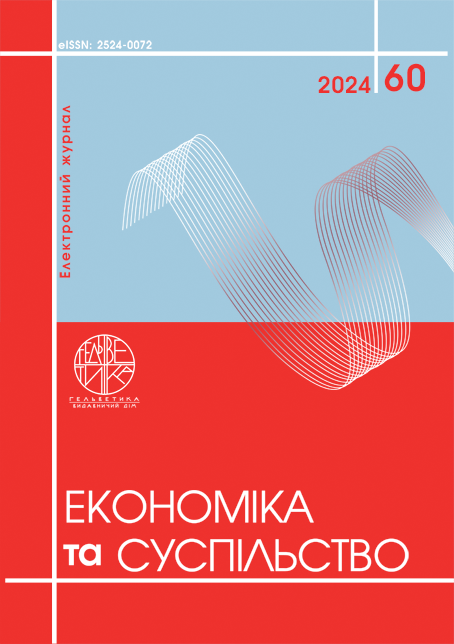ОСОБЛИВОСТІ ФОРМУВАННЯ БРЕНДИНГУ АГРАРНИХ РЕГІОНІВ В УМОВАХ ЄВРОІНТЕГРАЦІЇ
Анотація
У статті досліджено особливості формування брендингу аграрних регіонів. Визначено відмінності між брендингом території, товарів та послуг. Обґрунтовано, що використання сучасних технологій у виробництві може підвищити конкурентоспроможність аграрного регіону та зробити його продукцію більш привабливою для споживачів. Доведено, що важливим напрямом розвитку брендингу аграрних регіонів є залучення місцевих сільськогосподарських підприємств до процесу брендингу території. Визначено основні етапи розробки маркетингової стратегії брендингу аграрних регіонів. Досліджено програми щодо розвитку брендингу міст, з зазначенням ідентичності обраних регіональних особливостей. На основі аналітичних даних визначено лідерів серед регіонів, які займаються аграрним бізнесом. Обґрунтовано неефективність стратегій розвитку бренду означених міст з погляду їх ідентифікації як аграрних регіонів. Доведено необхідність розробки стратегій брендингу аграрних регіонів з урахуванням необхідності тісної співпраці між органами державної влади, органами місцевого самоврядування, представниками бізнесу та громадськості.
Посилання
Каламан О. Б. Мандрикін Д. В. Особливості формування культур сучасних бренд-стратегій. Приазовський економічний вісник. 2020. Вип. 4(21). С. 28–34.
Кейс-стаді БРЕНДИНГ І МАРКЕТИНГ ТЕРИТОРІЙ. У чому секрет найбільш успішних міст в Україні?. Федерація канадських муніципалітетів / Проект міжнародної технічної допомоги «Партнерство для розвитку міст», 2019. 56 с.
Кравців І. К. Маркетинг сільських територій прикордонного регіону в умовах нових викликів європейської інтеграції: автореф. дис. … канд. екон. наук; спец.: 08.00.05 – Розвиток продуктивних сил і регіональна економіка. Львів: ДУ «Ін-т регіон. досліджень ім. М. І. Долішнього НАН України», 2017. 23 с.
Логотипи і слогани міст України: 30 брендів. URL: https://ua.igotoworld.com/ua/article/1361_logotipi-i-slogani-mist-ukrajini.htm.
Махначова Н. М. Семенюк І. Ю., Ременюк Я. А. Адаптація світових тенденцій брендингу територій до українських запитів. Державне управління: удосконалення та розвиток. 2020. № 10. URL.: http://www.dy.nayka.com.ua/pdf/10_2020/35.pdf.
Михайлова Л. І. Особливості сільських територій та брендингові перспективи сільського розвитку. Вісник ЖНАЕУ. 2016. № 2 (57). С. 15–23.
Офіційний сайт Державної служби статистики України. URL: https://www.ukrstat.gov.ua/.
Павлова І. О. Бренд сільських територій як агропродовольчих територій: іміджеві переваги та обмеження. Прод. ресурси. 2017. № 9. С. 83–89.
Kalaman O.B., Mandrykin D.V. (2020). Osoblivosti formuvaniya kultur suchasnih brend-strategii [Features of the formation of cultures of modern brand strategies]. Priazovsky economic herald. Issue 4 (21). pp. 28–34.
Keis-stadi BRENDYNH I MARKETYNH TERYTORII. U chomu sekret naibilsh uspishnykh mist v Ukraini? (2019) [Case study BRANDING AND MARKETING OF TERRITORIES. What is the secret of the most successful cities in Ukraine?] Federation of Canadian Municipalities / International Technical Assistance Project "Partnership forLocal Economic Development and Democratic Governance", 56p.
Kravtsiv I.K. (2017).Marketing silskih teritorii prikordonnogo region v umovah novih viklikiv evropriskoi integracii [Marketing of rural areas of the border region in the context of new challenges of European integration]: PhD thesis... Candidate of Economics; speciality: 08.00.05 - Development of productive forces and regional economy. Lviv: M.I. Dolishnyi Institute of Regional Studies of the National Academy of Sciences of Ukraine. 23 p.
Logos and slogans of Ukrainian cities: 30 brands. Available at: https://ua.igotoworld.com/ua/article/1361_logotipi-i-slogani-mist-ukrajini.htm.
Makhnachova N.M., Semeniuk I.Y., Remeniuk Y.A. (2020). Adaptaciya svitovih tendencii brendingu teritorii do ukrainskih zapitiv [Adaptation of world trends in territory branding to Ukrainian requests]. Public administration: improvement and development. № 10. Available at: http://www.dy.nayka.com.ua/pdf/10_2020/35.pdf.
Mikhailova L. I. (2016). Osoblivosti silskih teritirii ta brendingovi perspektivi silskogo rozvitku [Features of rural areas and branding prospects of rural developmen]t. Visnyk ZhNAEU. № 2 (57). pp. 15–23.
Ofitsiinyi sait Derzhavnoi sluzhby statystyky Ukrainy [Official website of the State Statistics Service of Ukraine] Available at:https://www.ukrstat.gov.ua/.
Pavlova I.O. (2017). Brend silskih teritorii yak agroprodovolhih teritorii imidgevi perepvagi ta obmegeniya [Brand of rural areas as agro-food territories: image advantages and limitations]. Prodovolchi resursi -Prod.resursy. №9. pp. 83–89.

Ця робота ліцензується відповідно до Creative Commons Attribution 4.0 International License.


